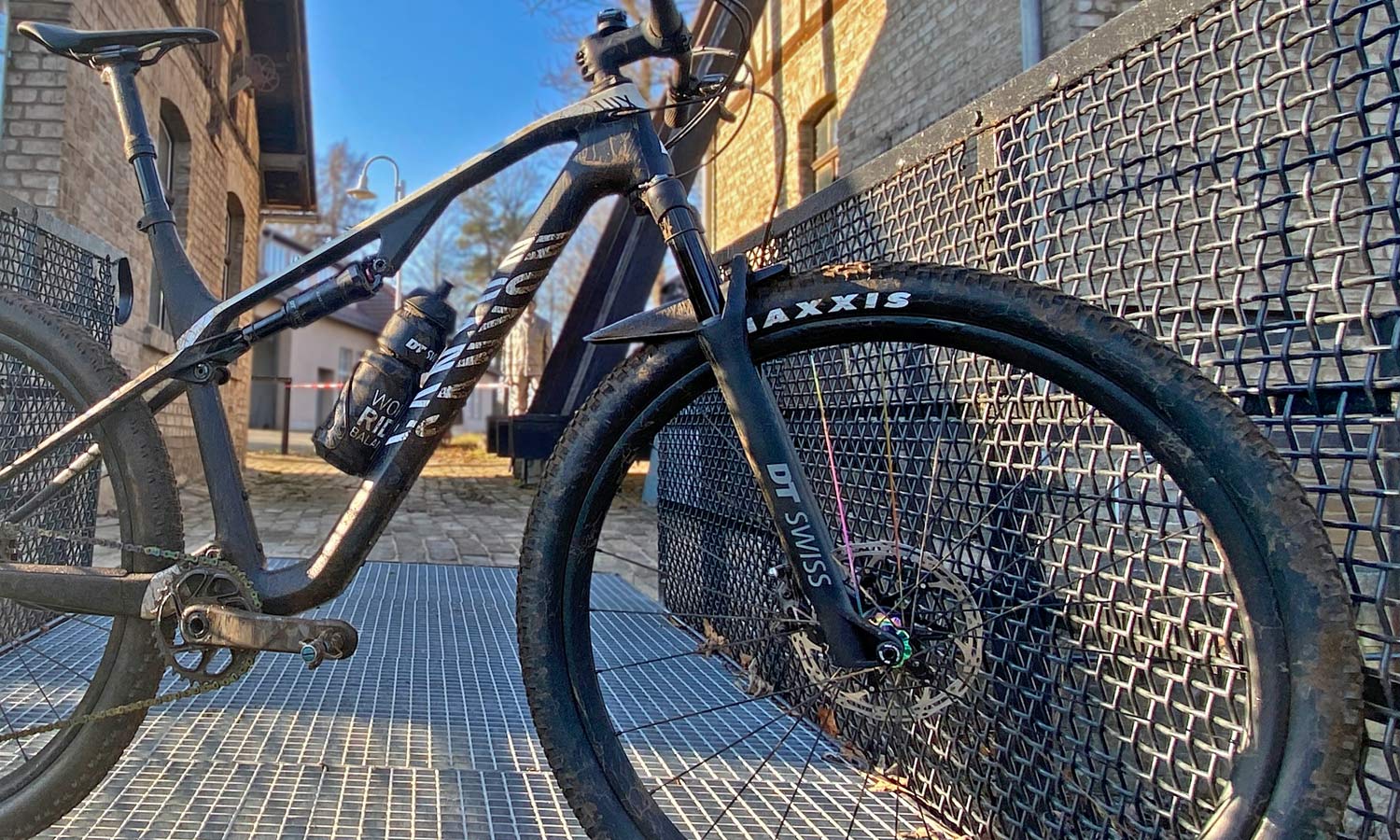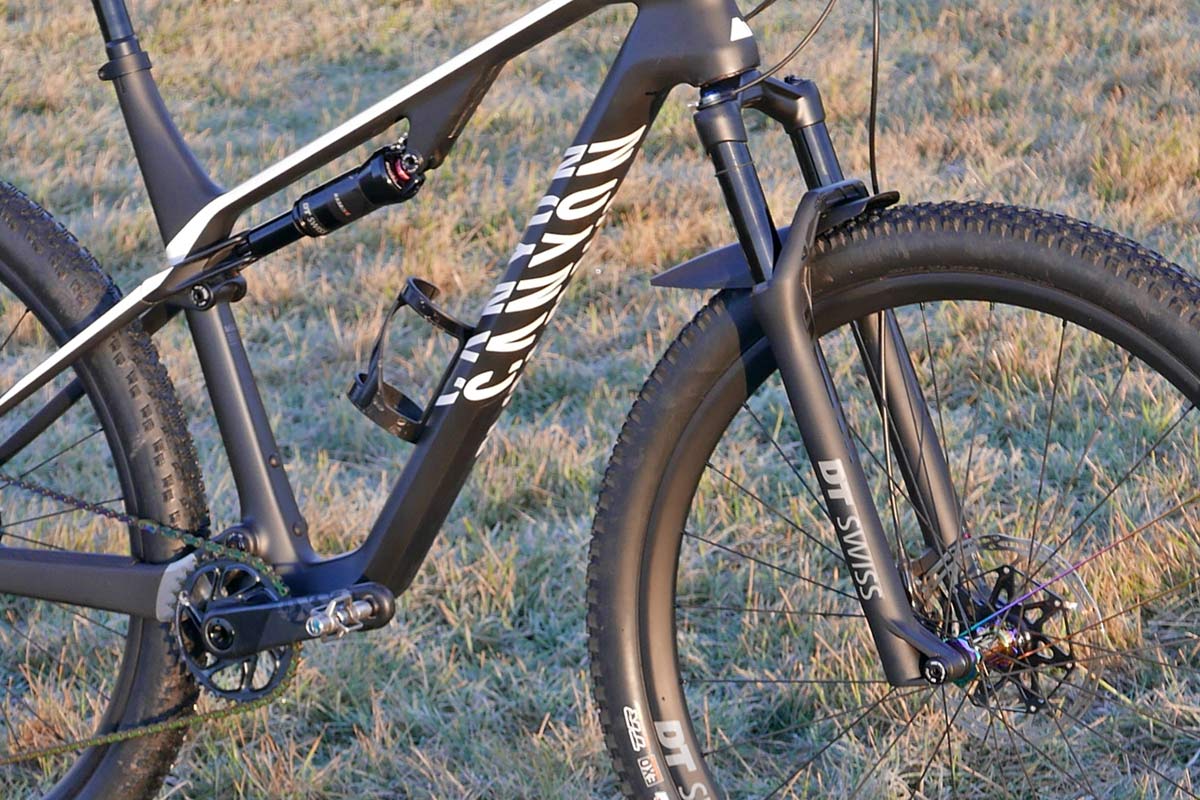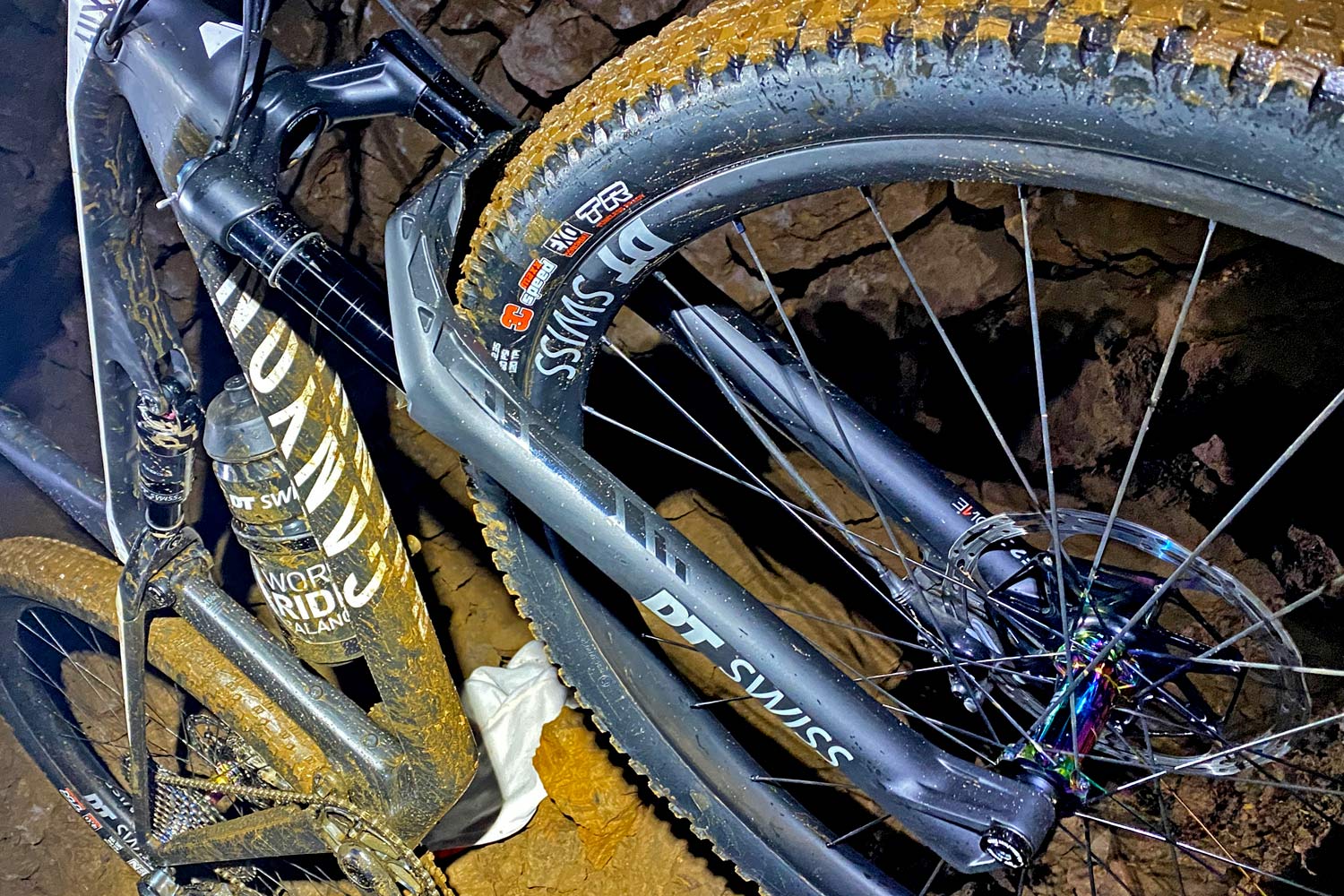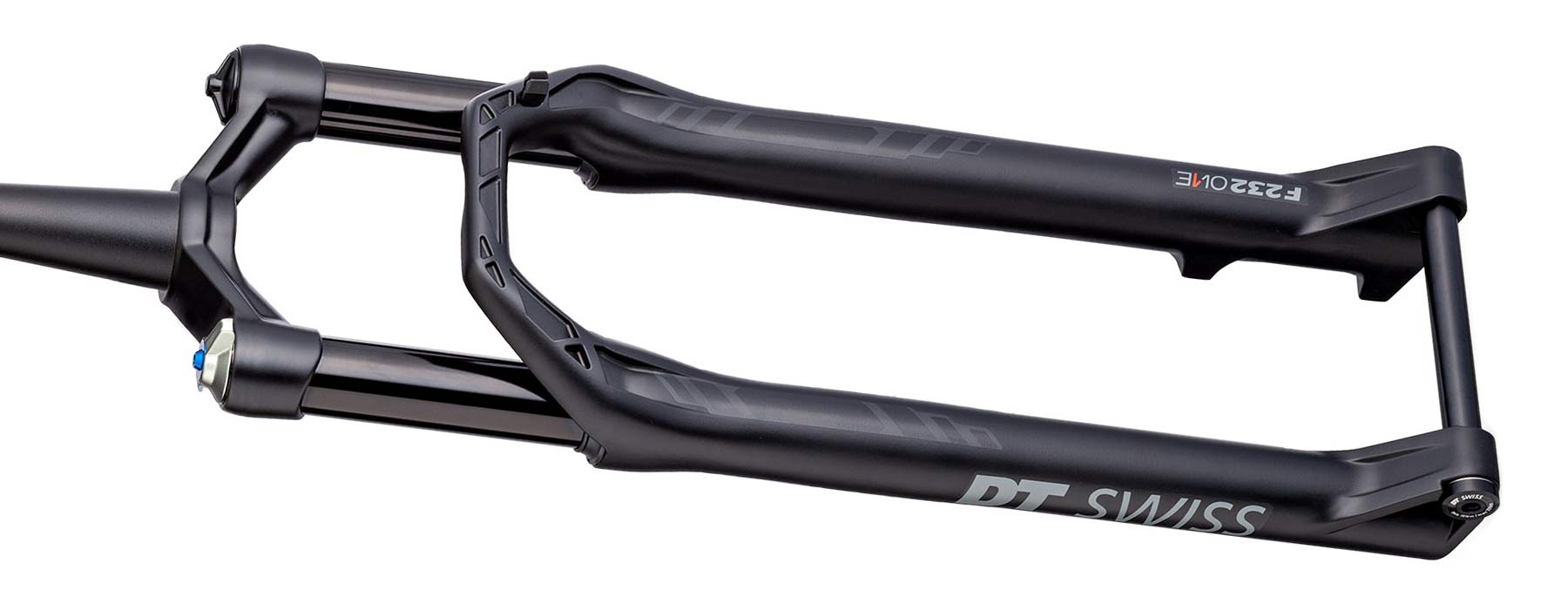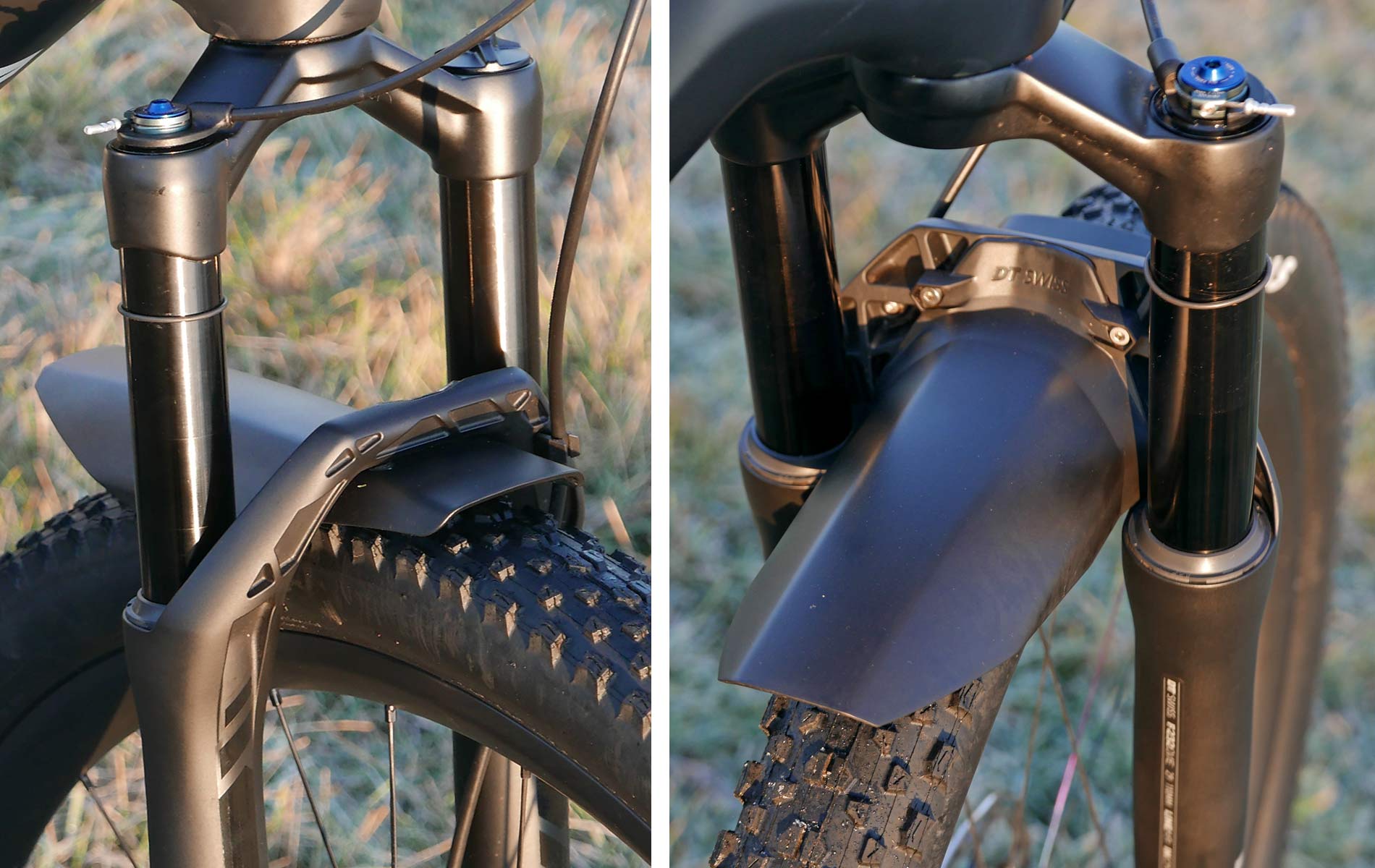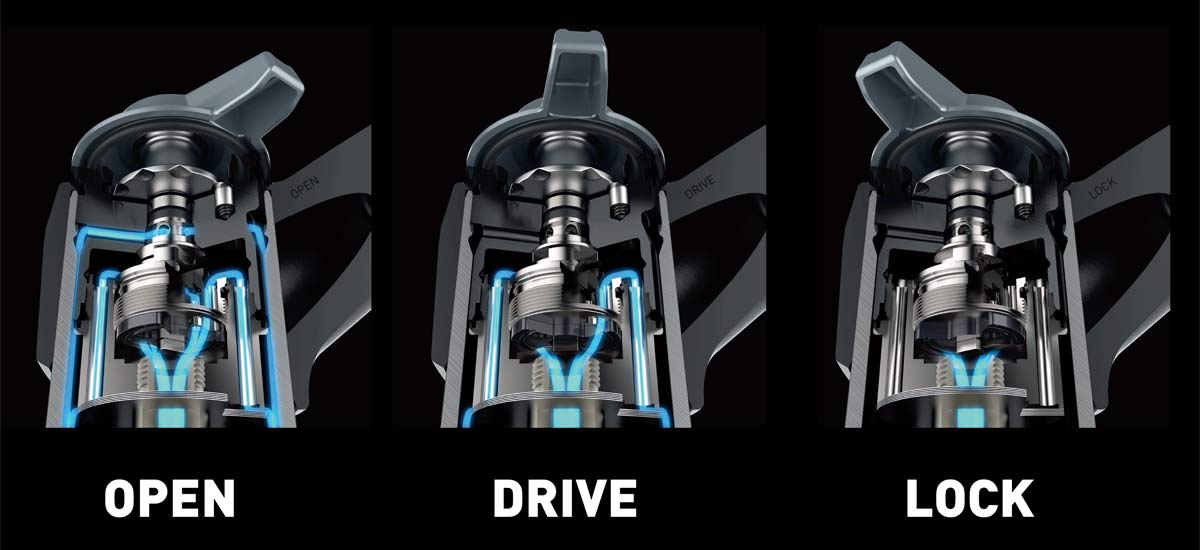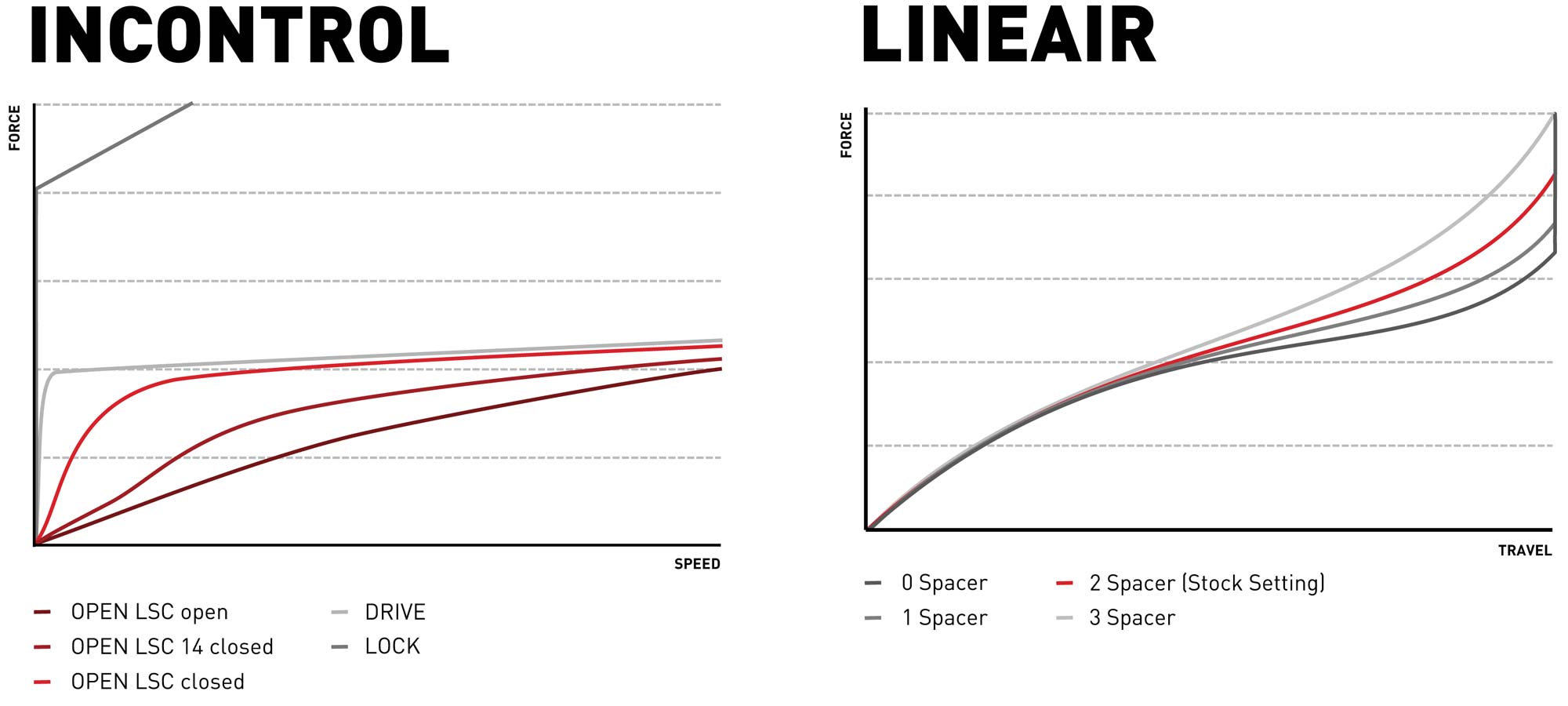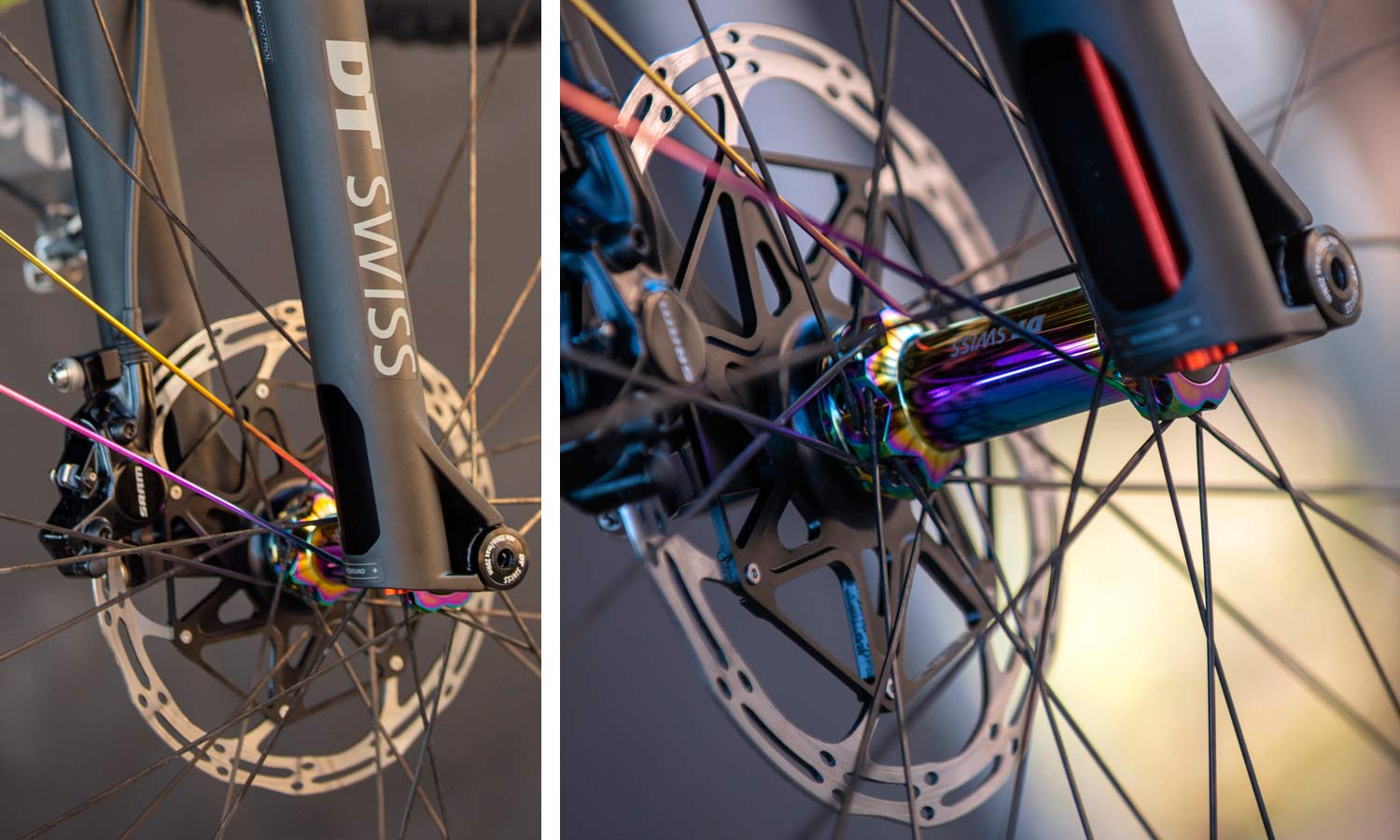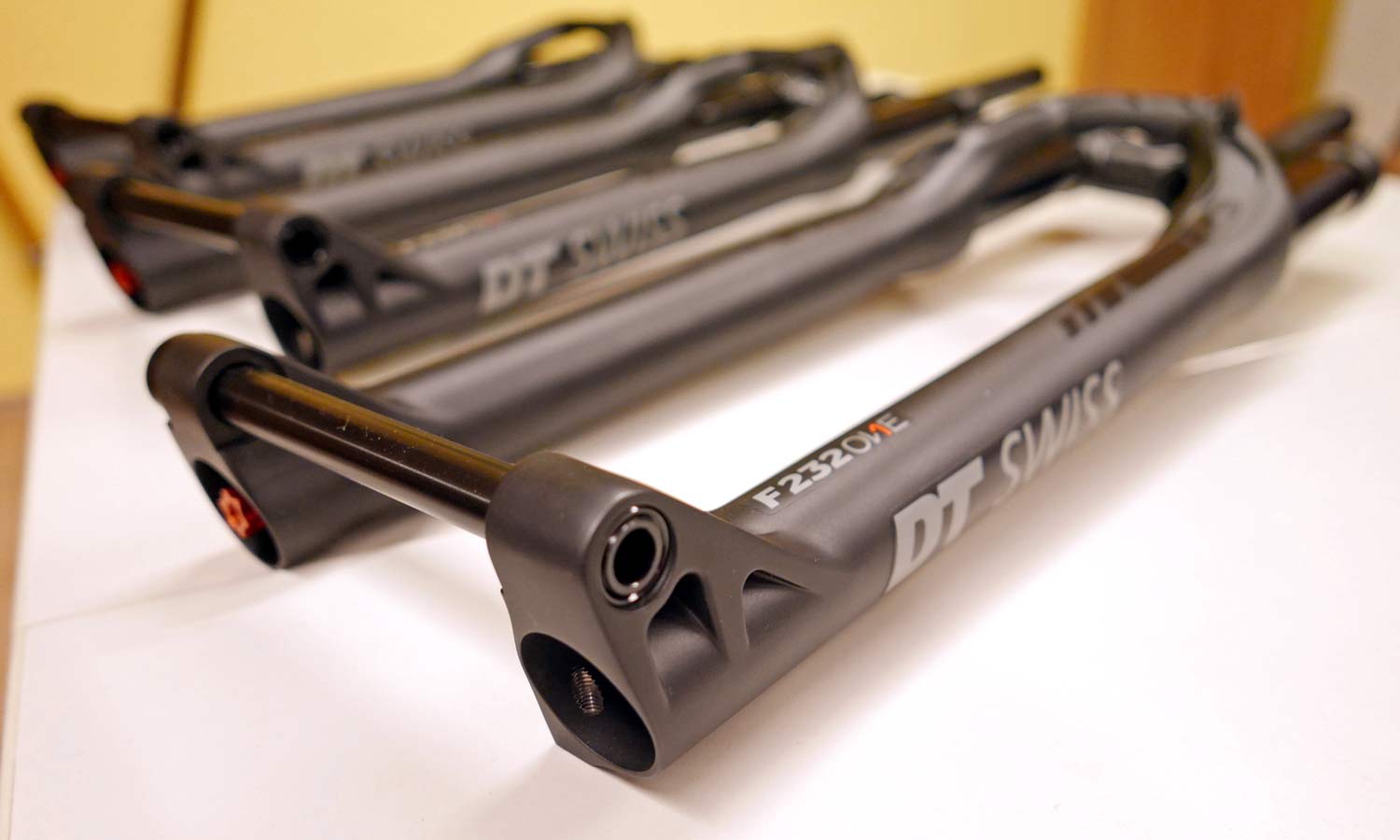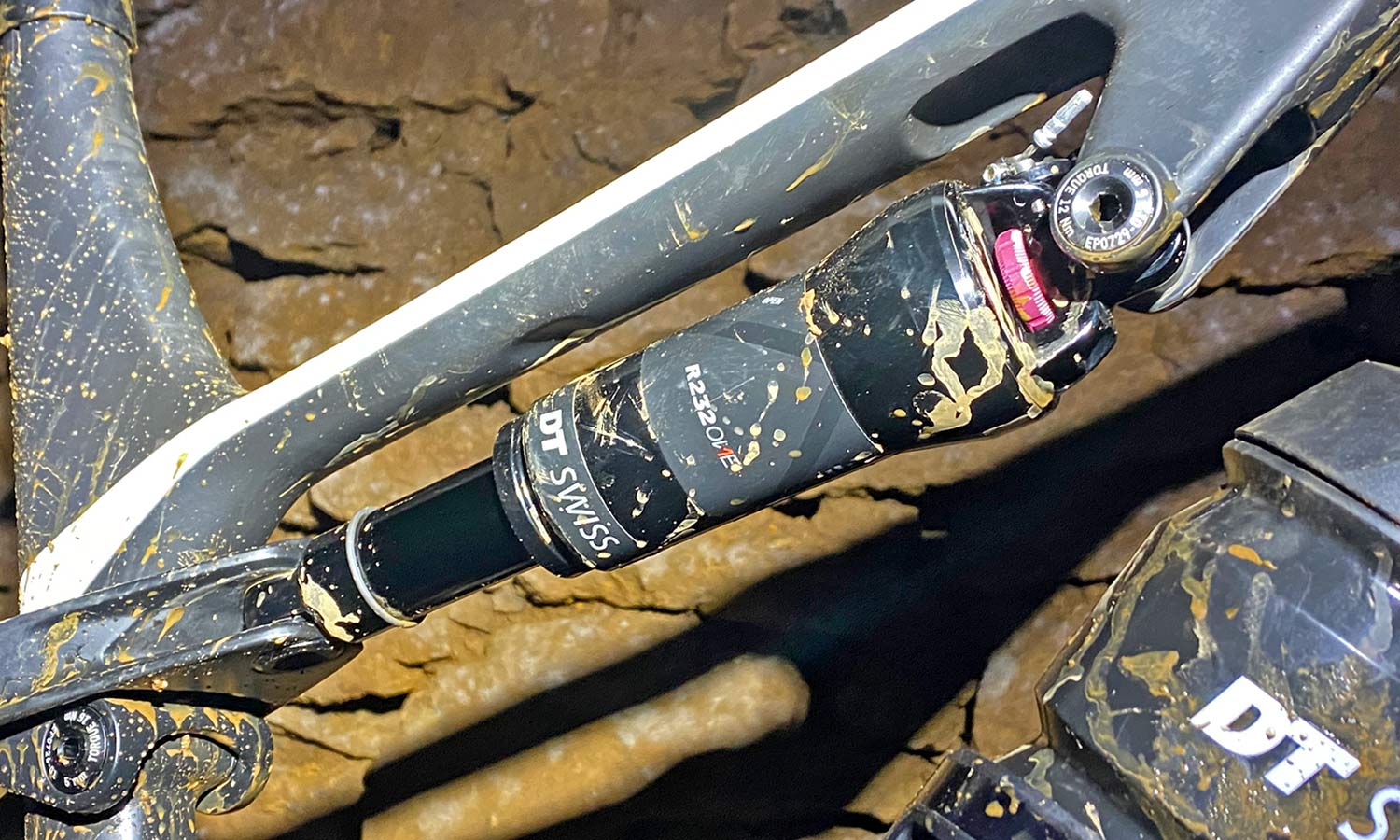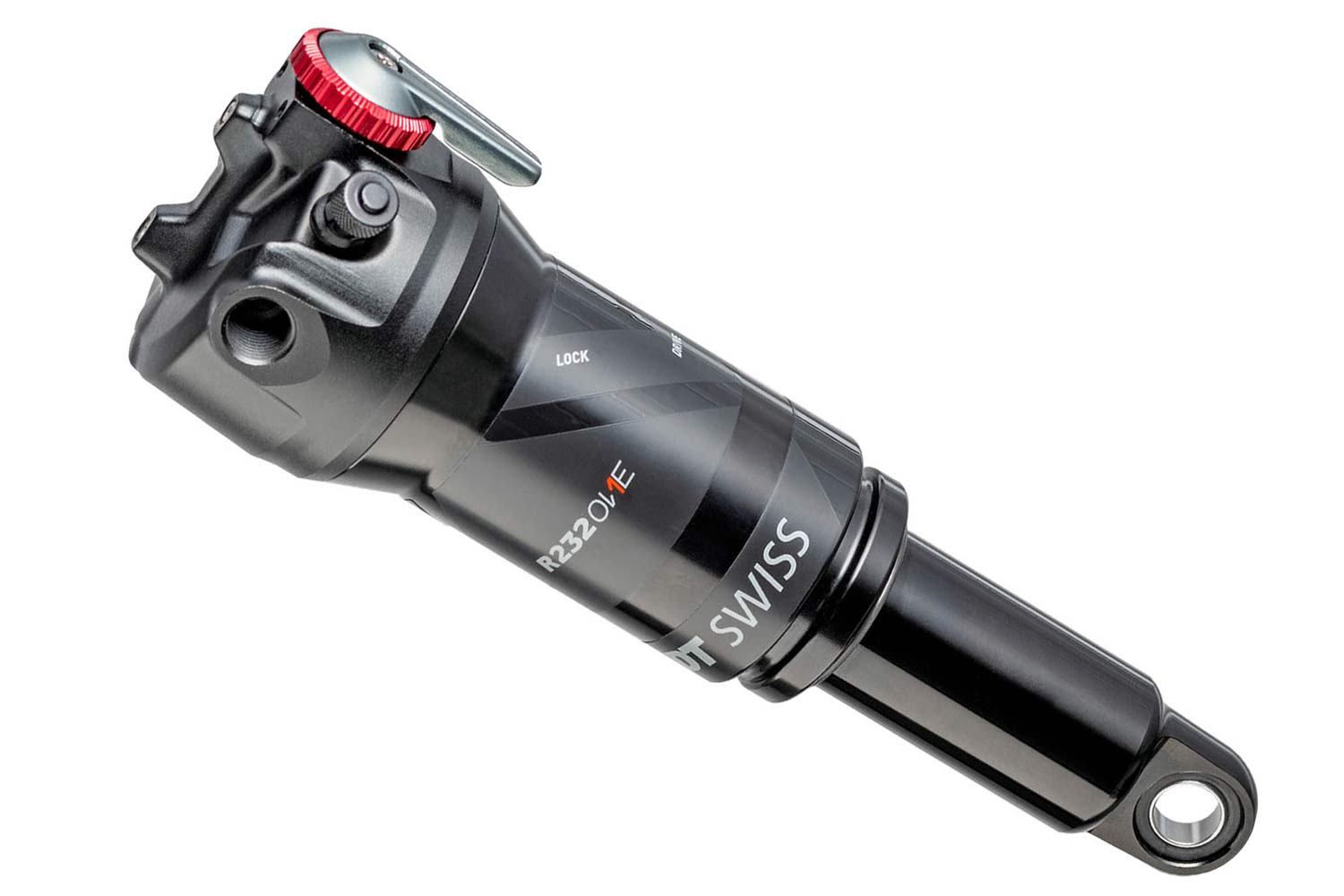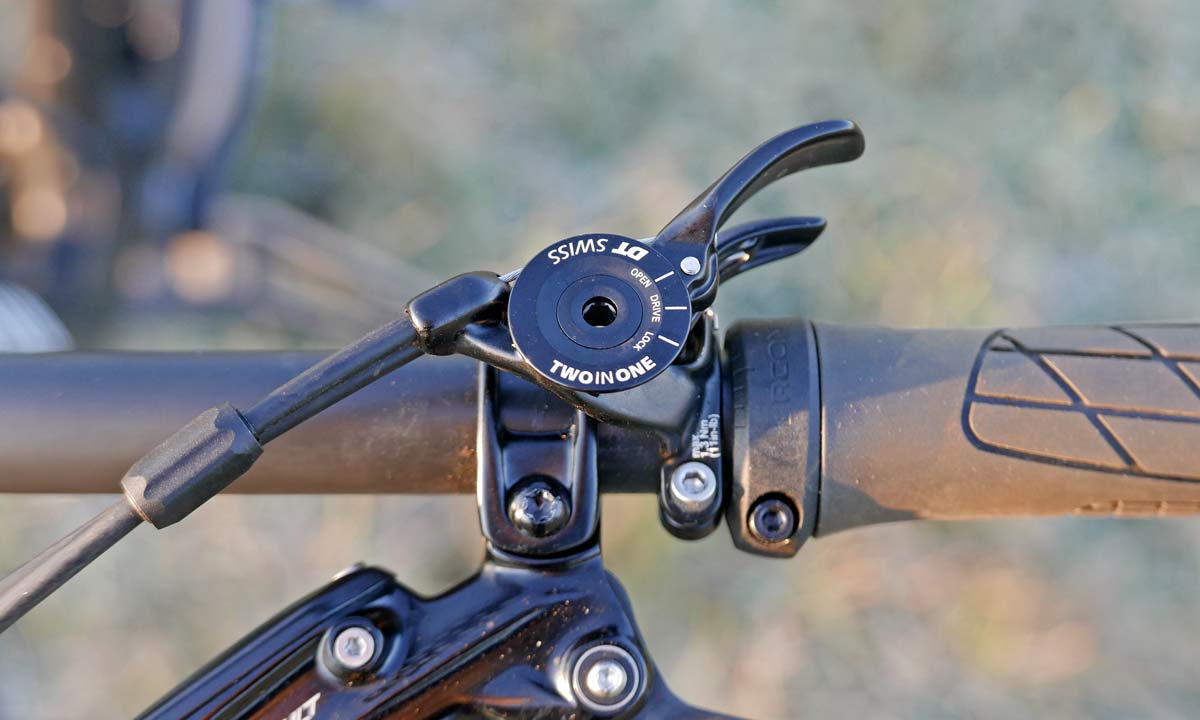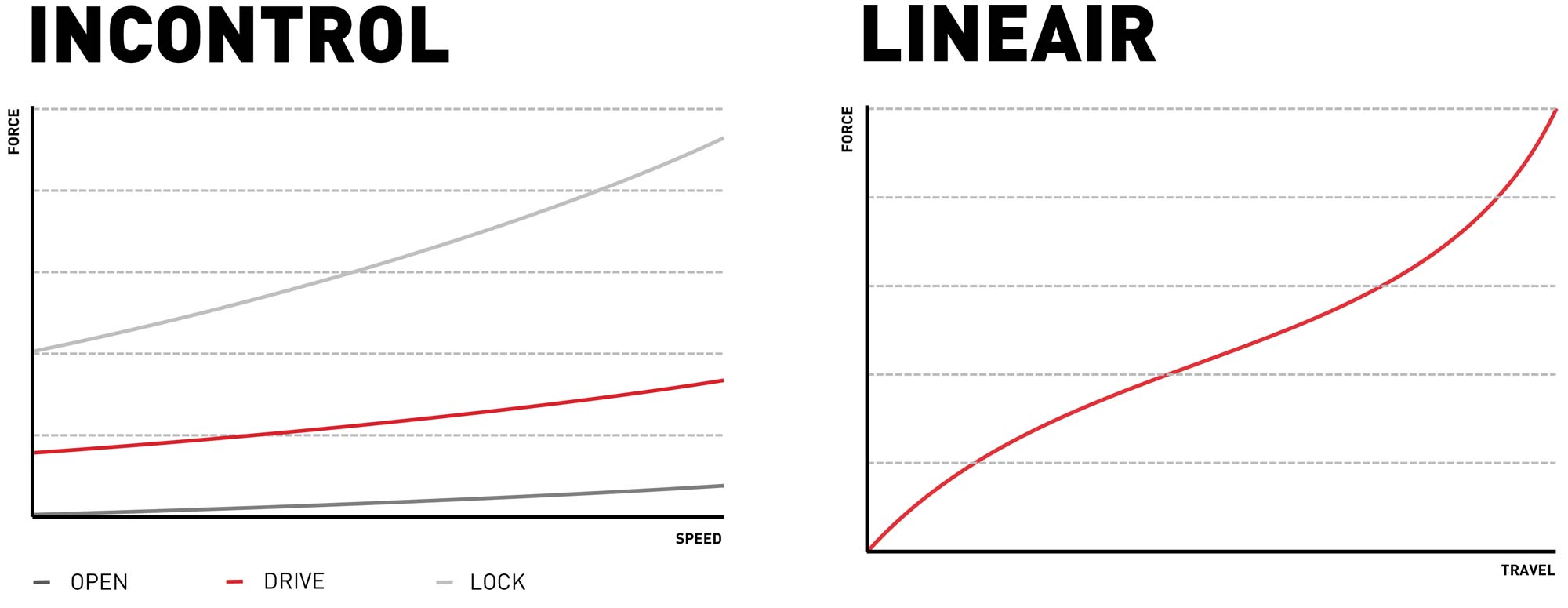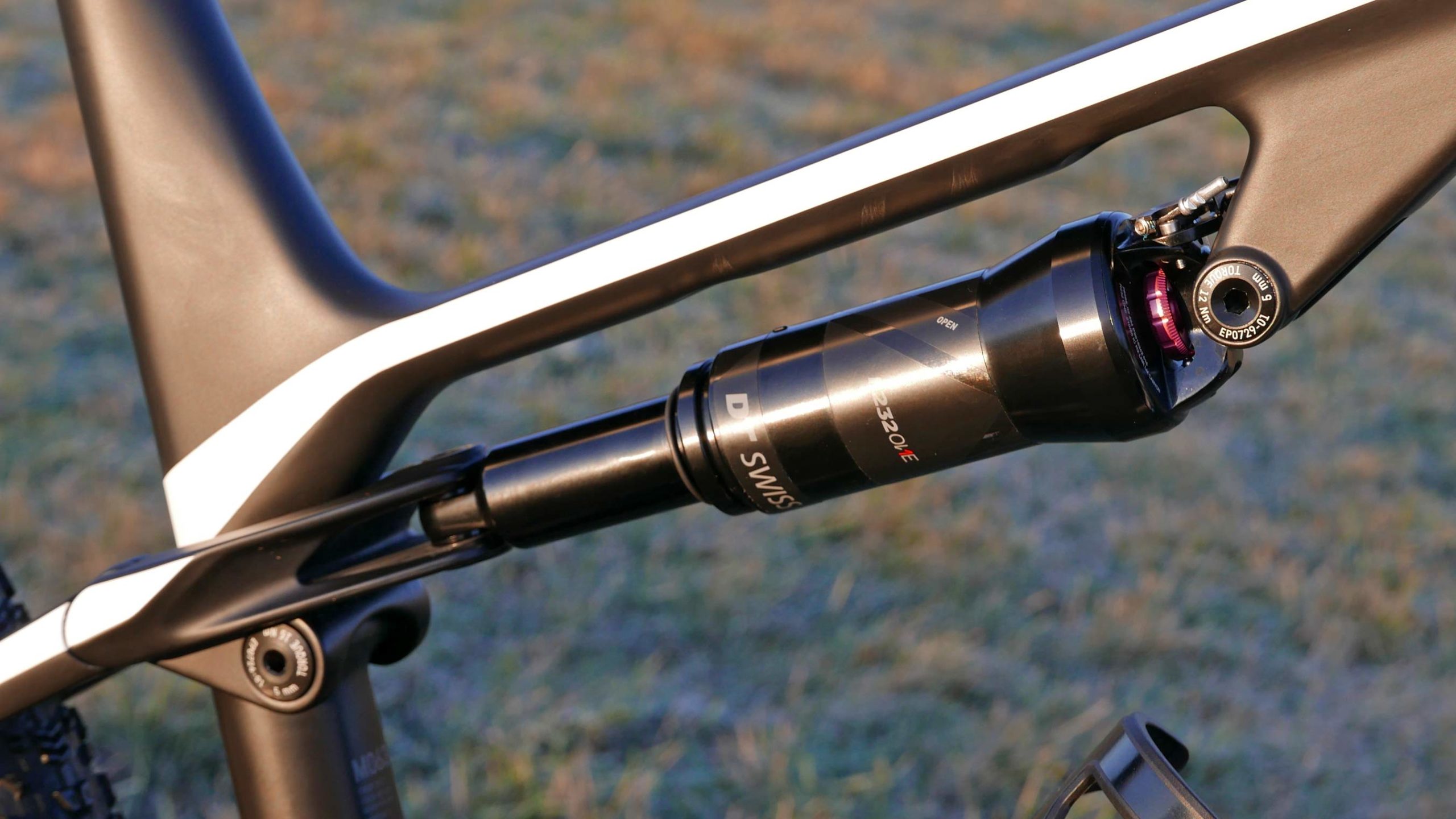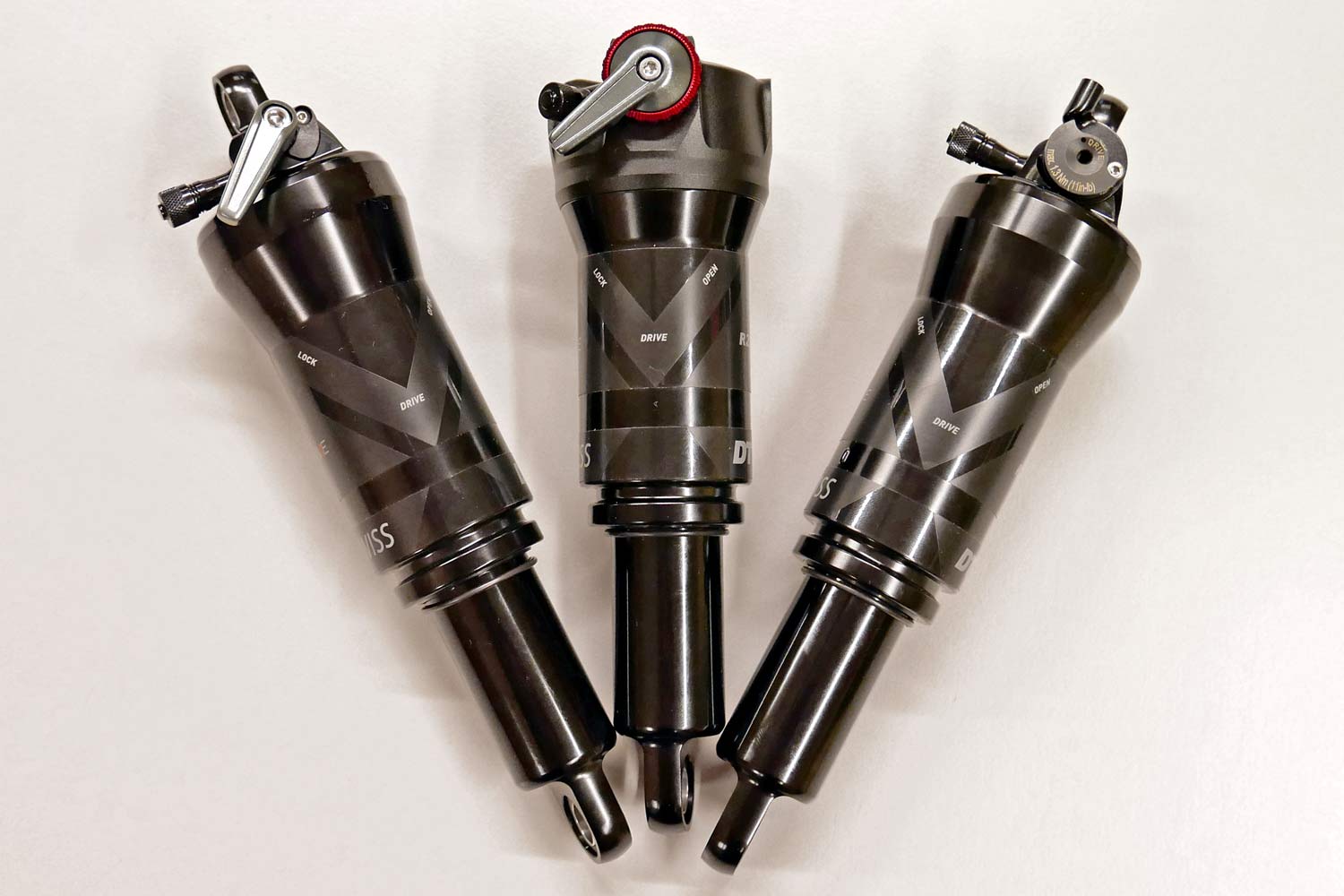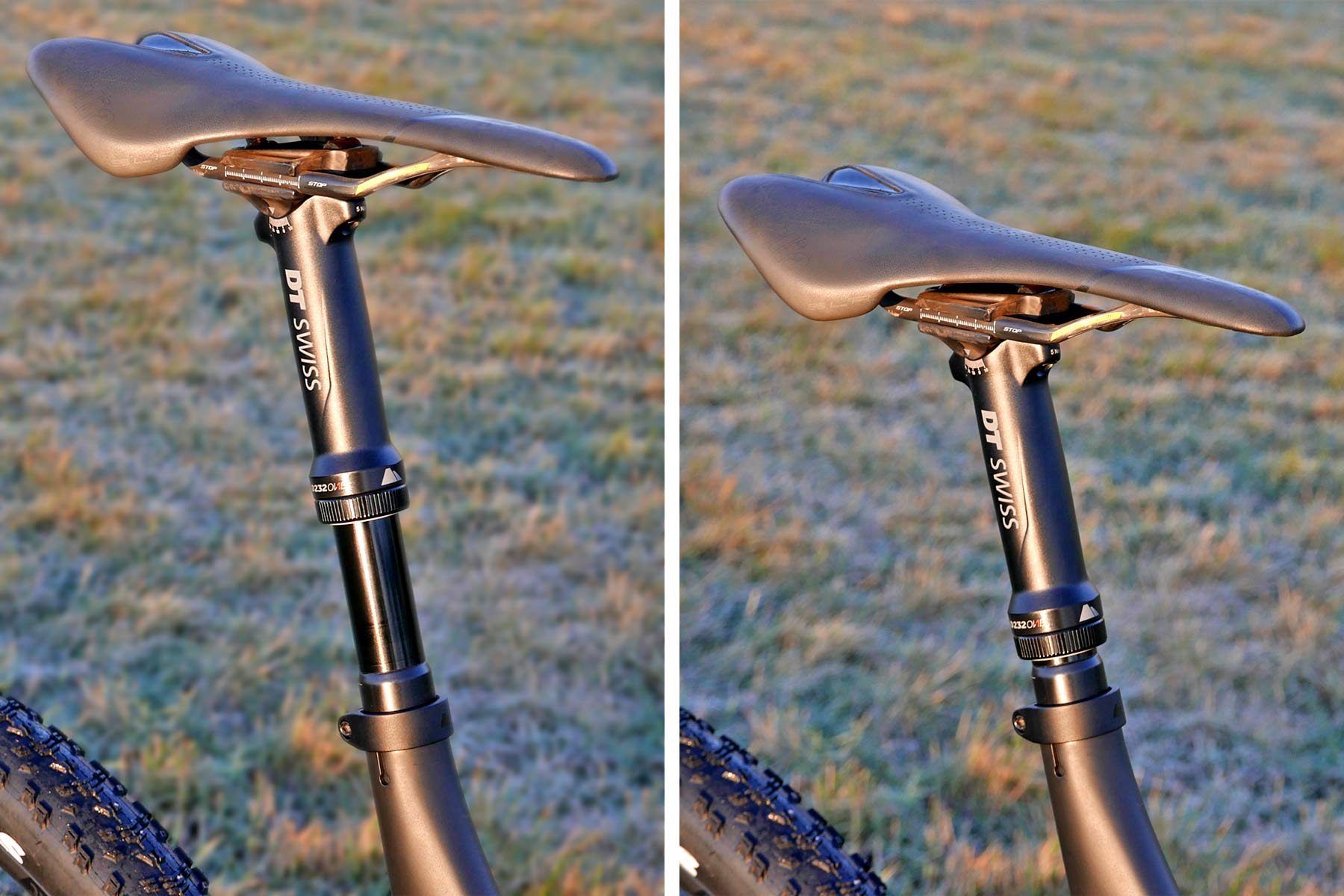DT Swiss’ new 232 One XC suspension evolves more than a decade of cross-country World Cup proven tech, mixed with holistic lessons learned on their more recent 535 One all-mountain fork & shock development. Together the new F232 fork & R232 shock deliver race-winning mountain bike suspension with a major step up in both light weight & stiffness, resetting DT Swiss as a force to reckon with on the World Cup stage.
DT Swiss F 232 One XC mountain bike suspension platform
Overhauling their XC suspension wasn’t much of a surprise after I spotted the World Cup-winning fork last summer on the bikes of Mathias Flückiger. I even called the name, based on DT’s recent move to logical naming schemes. Much like we saw on the 535 One all-mountain platform, the biggest outward change for DT is the move to a conventional front-facing arch design for the fork, which sees big stiffness improvements. At the same time, the rear shock gets refinements too, designed to match fork performance seamlessly.
The overarching theme here, like we see in most recent XC mountain bike tech updates, is that cross-country race courses have gotten more technical in recent years, and pretty much all XC tech had to get stronger to handle the more aggressive racing.
DT Swiss F 232 One XC mountain bike fork
The new F 232 ONE fork retains the 32mm stanchions of its predecessor, but the all-new optimization of the cast magnesium lowers has resulted in a new 29er fork that is lighter & stiffer than ever. At the same time the new fork steps up with longer 100-120mm travel versions that DT claims set a new stiffness:weight ratio for XC racing forks. The F232 fork wasn’t aiming to be the lightest, but starting at just 1480g, it’s close to the best that RockShox & Fox offer.
DT F232 fork – Tech details
In developing the new 232 platform, DT Swiss wanted to reclaim a top spot with a more precise feel & smoother performance. Even though they’ve been making suspension for years, their production numbers are relatively small in the market and most mountain bikers still see DT as a wheel & hub maker.
So DT set out to take on the two biggest names in mountain bike suspension, with the goal of beating them both on XC stiffness to weight. Torsional stiffness gives a fork a precise feeling for confident & predictable handling, and bending stiffness ensures smooth, friction-free telescoping to allow supple travel & damping. DT Swiss says their F232 beats the light XC forks from RockShox & Fox in both categories, with minimal extra weight. (We can take A to mean RockShox SID & B to mean Fox 32 in Step Cast & standard configurations.)
The DT suspension engineers set the stiffness targets they wanted to hit working with their pro sponsored riders, then worked backwards to hit their weight targets.
In fact, they came to the balance mostly working with conventional materials – the fork uses an aluminum tapered steerer & crown, alloy stanchions, and magnesium lowers. The played with the idea of carbon, but were able to achieve similar weight reduction by studying & simulating the forces in the fork to shave away extra material.
The results are asymmetric webs in the arch that account for the differing, asymmetric forces in the fork legs. Taking into account the damper in one leg and the brake forces & air spring in the other, the difference was less than the development team had anticipated, but still dictated the asymmetric reinforcement.
InControl O.D.L. on-the-fly damping adjustment
One of the hallmarks of DT Swiss XC suspension has been the O.D.L. (Open, Drive, Lock) setup that lets the rider flip a switch to get three different compression damping modes. That overall concept carries over, now refined under a new name – InControl damping.
By building several different oil paths inside the hydraulic damper, DT’s Incontrol provides three usable modes for the full range of MTB race conditions. Open moves oil through both high (HSC) & low-speed compression (LSC) circuits for maximum sensitivity, while the rider can still dial in more or less low-speed adjustment for a firmer platform feel that could be suitable for differing riding styles or courses. Drive mode closes LSC, limiting oil flow through the stiffer, internally tunable HSC shim stack that provides firm early support, but still allows the wheel to track rough terrain. Then, Lock closes it all (except for a blow-off valve) for a firm feel, only really suited to finish line sprints & extended climbing of completely smooth tracks.
 LineAir tunable dual-chamber air spring
LineAir tunable dual-chamber air spring
Over into the left leg, a new dual-chamber Lineair air spring adapts the same equalizing pressure concept from DT’s previous shocks to the new F232 fork (a shift from the prior fork’s air+coil design). A strategically located bypass valve connects the two air chambers.
It works by keeping negative chamber pressure higher when the fork is extended (uncompressed) which means the negative pressure combats seal stiction for supple early travel & low force to start the fork moving. Then, the move to balanced pressure, then ultimately a switch to higher positive pressure as the fork compresses through the middle of travel results in a flatter, more linear spring curve like you might see in a coil fork (without the weight penalty.)
Riders can tune the feel of fork progression with internal volume spacers (Adaptable Progression Tune, or APT), with the benefit that the dual-chamber layout means the early supple spring curve in not affected by the most progressive ending rate.
Weight saving measures continue below the crown & arch, with hollowed-out 51mm offset dropouts and a window cut into each leg of the lowers to remove unnecessary material. In the bottom of the right leg, a long red extension knob allows easy low-speed rebound (LSR) adjustment.
DT F232 fork – Pricing & options
The DT Swiss F 232 One XC fork is 29er-only and available in three distinct travel options – 100mm, 110mm & 120mm (travel is not internally adjustable). It also comes in either Remote & Lever versions, determining where you flip the three ODL damping modes. The 100mm Remote version is the lightest at a claimed 1480g, while an extra 10mm of travel adds another 30g (with uncut 230mm long steerer, not including the Boost thru-axle).
Forks all include the custom-fit mini front fender, brake hose clamp, star nut, APT spacers, a bolt-on RWS thru-axle (without the standard RWS lever), and a 2in1 remote ODL lever for Remote version forks. The Lever forks with InControl lever on the top of the right leg retail for $1113 / 979€, and the Remote forks retail for $1135 / 999€, regardless of travel length. All new F232 forks will be available from regular DT distribution channels starting in April 2020.
DT Swiss R 232 One XC mountain bike shock
Matching the new XC front suspension, the R 232 One shock delivers the same Lineair dual-air spring & InControl damping performance for your full-suspension frame.
DT R232 shock – Tech details
The Incontrol damping tech is pretty much the same, offering three O.D.L. stages of compression damping, controlled either on the shock body or from the same 2in1 remote that comes with the fork. Open for descending; Drive for rolling terrain & technical climbs; and Lock for smooth finish line sprints.
Again, Open frees up high & low-speed compression circuits for the most small & large bump sensitivity (in the shock LSC is non-adjustable). Drive mode restricts oil flow to only the internal HSC shim stack for higher compression damping and a stable pedaling platform. Lock again closes all oil movement for smooth, high power sprints, protected by a blow-off valve.
LineAir was essentially DT Swiss’ previous dual-chamber air spring tech from their rear shocks, so the new R232 layout is just optimized here for low breakaway force, supple mid-stroke, and a more progressive end of travel to prevent bottoming-out. DT just tweaked the two air chambers’ volumes and the position of the bypass to get the XC race-ready spring curve they were aiming for.
Again, the negative chamber has higher pressure that the positive chamber when the shock is uncompressed for supple early travel. Then, as the shock compresses, the piston moves past the bypass equalizing positive & negative air chambers, and ramps up positive pressure through the remaining travel.
DT chose to keep the R232 shock simple, offering only external rebound adjustment beyond the 3-position O.D.L. compression damping modes. The goal was to keep the shock light, but also to focus on working as OEM with frame makers to optimize the shock’s spring curves for the unique & individual kinematics of specific full-suspension XC bikes. It simply doesn’t make sense for DT to offer dozens of different tunes to consumers, when they can be more assured that mountain bikers get the optimal suspension performance by using the DT shock only on bikes where the manufacturer worked with DT Swiss to develop the optimal tune for a specific bike design.
The R232 shock is available in standard & trunnion mount bodies (trunnion shocks move the LSR rebound knob behind the O.D.L. control) in $463 / 406€ Lever or $486 / 429€ Remote versions. All shocks are metric sized with 40, 45, 50 & 55mm stroke and standard eye-to-eye lengths of 190 & 210mm or trunnion eye-to-eye lengths of 165 & 185mm. Standard shocks have the lowest claimed weight of just 230g (190×45 Remote) or trunnion weight of 300g (165×45 Remote) without mounting hardware.
The new R232 One shocks are also available in April, but DT recommends talking with your local retailer to figure out if there is an appropriate tune available for your existing bike.
A DT Swiss dropper seatpost?!
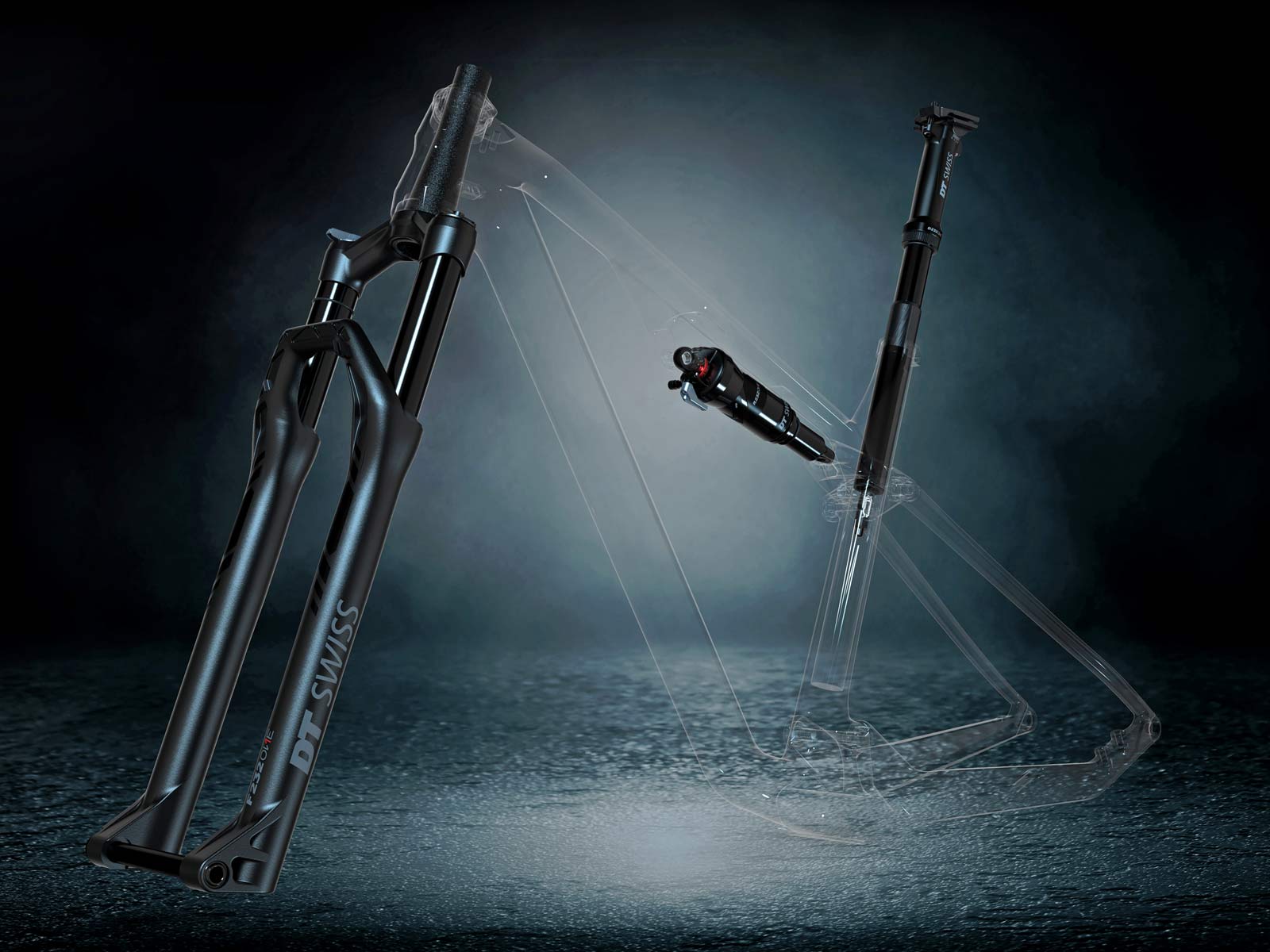
Oh yeah, notice the third component hiding in any of the photos so far? Did we mention there’s an all-new DT Swiss 232 carbon, upside-down XC dropper post, too?
Short travel, lightweight construction, smooth mechanical actuation, and 27.2mm or 30.9mm compatibility. Check out the full dropper post details here. Or check the ultra limited edition Canyon Lux CF SLX 9.0 DT LTD, the first bike to feature the full DT 232 XC suspension setup.
